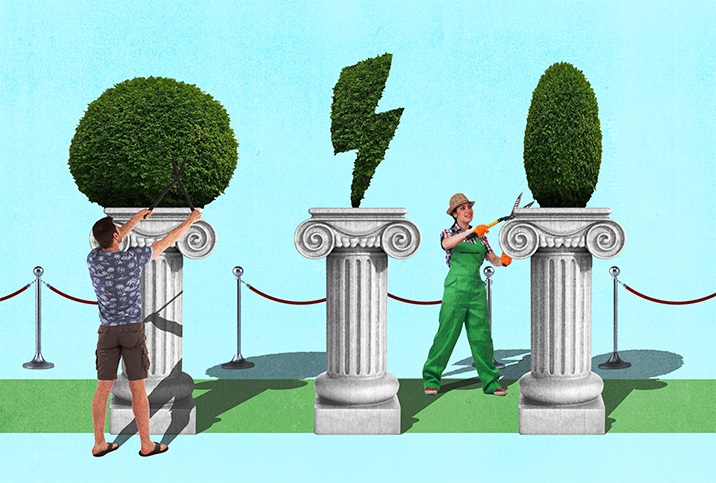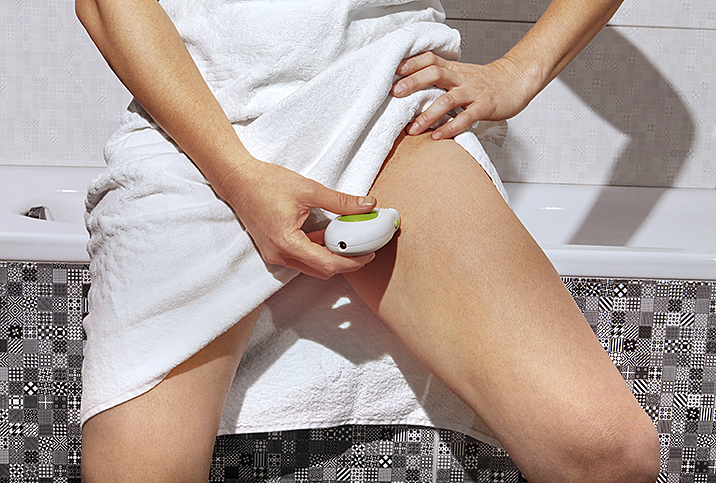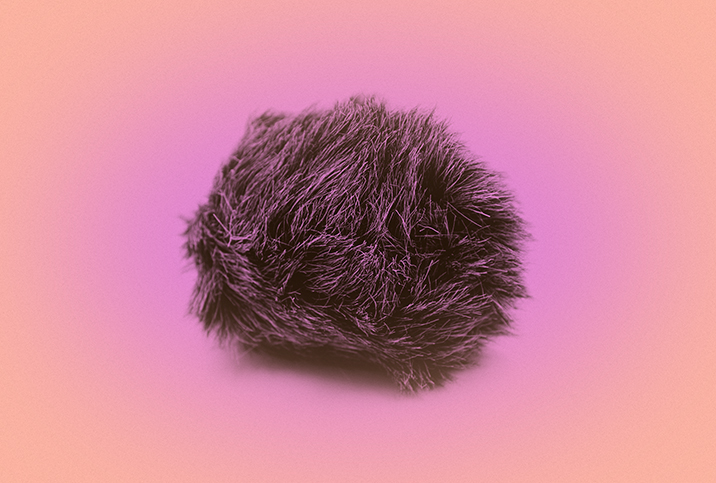Why Do I Get Cysts on My Bikini Line?

Your bikini area is sensitive, and ingrown hairs can quickly turn into painful cysts.
A cyst is a round lump that can form anywhere on your body, and it often contains white, yellow or clear fluid. Skin cysts range from the size of a pea to a large dome-like shape.
They often occur on the vulva and are common along the bikini line. As they rub against the underwear line, they can become red and irritated, which can lead to an increase in pain and discomfort.
Causes of cysts on the bikini line
"Cysts on the bikini line are caused by ingrown hairs. These hairs are unable to puncture through the superficial layer of the skin and, hence, they become ingrown," explained Alexander Zuriarrain, M.D., a quadruple-board-certified plastic surgeon at Zuri Plastic Surgery in Miami.
"This inward growth causes the body to encapsulate the hair shaft, creating a cystic structure. These cysts can occasionally incorporate multiple hair follicles and can become larger over time," Zuriarrain said.
'If oil or trapped dead skin cells are to blame, then exfoliating the area before shaving can help to remove these dead skin cells and leave the skin feeling smoother and hydrated.'
Ingrown hairs are often caused by hair removal methods, including shaving, tweezing and waxing. Shaving is usually the main culprit, as many people have poor shaving techniques that can result in friction and irritation. As the bikini line is a sensitive area, it's easy for the skin to become irritated as a result of dryness and dull blades.
However, hair removal is not the only cause of cysts forming on the bikini line. The bikini area is a skinfold, so it can become damp and irritated when there is friction against the underwear line. This creates the perfect breeding ground for bacterial growth, explained Geeta Yadav, M.D., M.H.S., a board-certified dermatologist and founder of Skin Science Dermatology in Toronto.
"Wearing tight workout clothes or underwear made from synthetic materials can trap sweat and bacteria against the skin," Yadav said.
This circumstance can trigger the formation of a cyst, which can become large and painful if left untreated.
Treating bikini line cysts
There is no single treatment for cysts on the bikini line, because the approach depends on the size of the cyst and whether it's causing pain.
"In many cases, the best way to treat a cyst at home is to administer warm compresses until it comes to a head, at which point the cyst can drain," Yadav said.
In addition to a warm compress, a cold compress can also be used to reduce swelling and inflammation. Alternating between warm and cold compresses several times a day can help the cyst drain or shrink more quickly.
If this treatment is ineffective, and the cyst is still inflamed, painful or large, then topical antibiotics can be applied to treat the bacterial infection and reduce swelling. Your doctor can usually prescribe these to you, and they may require a follow-up to see if there is any improvement.
"The last resort would be to see a board-certified plastic surgeon who can excise the cyst in a cosmetically appropriate manner. Surgical excision would be the definitive treatment for this type of cyst that fails conservative management," Zuriarrain said.
During excision, the surgeon typically makes an incision around the cyst and drains the entire contents. Once it's stitched up, you are free to go home, and it should heal very quickly.
It's important that you don't attempt to cut or drain the cyst at home, because this can cause a deeper infection and potential scarring. While you're waiting to have it treated, wear breathable, comfortable underwear made from cotton and keep the area clean with mild soap and water. Avoid scented body lotions, bath bombs, creams and deodorants, as they can cause further irritation.
Prevention of cysts depends on the cause
There are many ways to prevent cysts from forming on the bikini line, depending on the underlying cause. If oil or trapped dead skin cells are to blame, then exfoliating the area before shaving can help to remove these dead skin cells and leave the skin feeling smoother and hydrated.
If ingrown hairs are causing the cysts, Zuriarrain suggested switching from a razor to laser hair treatments.
"Laser therapy is by far the best option as it does not break the skin surface and, therefore, is the least traumatic option," Zuriarrain said. "This in turn decreases the chances of skin breakdown, bacterial entry and cyst formation."
Alternatively, you could stop removing your pubic hair altogether, which would minimize the risk of infection and irritation.


















